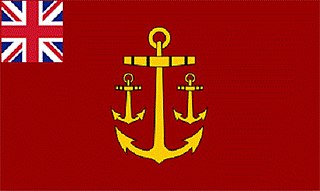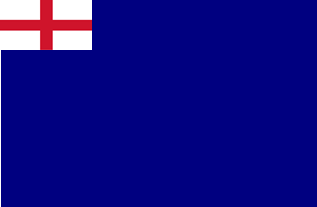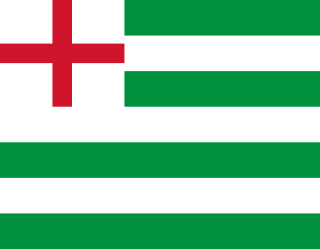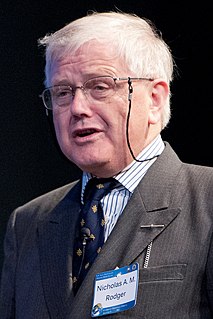Sir Robert de Herle was an English military commander who was Admiral of all the Fleets about England and Lord Warden of the Cinque Ports during the mid-14th century.
Vice-Admiral Sir William Gonson (1482–1544), was a Naval Judge and Naval Administrator of the English Royal Navy who served under King Henry VIII.

The Admiralty and Marine Affairs Office (1546-1707) originally known as the Admiralty Office (1414-1546) was a government office of the Kingdom of England and the English Navy's central command. It was first established in 1414 when the remaining regional admiralties, the Northern and Western were abolished and their functions were unified under a single centralized command. It was administered by the Office of the High Admiral of England, Ireland and Aquitaine later called the Lord Admiral of England. During the sixteenth century it oversaw the creation of standing "Navy Royal", with its own secretariat, dockyards and a permanent core of purpose-built warships, originated in the early 16th century during the reign of Henry VIII. Under Elizabeth I England became involved in a war with Spain, which saw privately owned ships combining with the Royal Navy in highly profitable raids against Spanish commerce and colonies. In 1588, Philip II of Spain sent the Spanish Armada against England to end English support for Dutch rebels, to stop English corsair activity and to depose the Protestant Elizabeth I and restore Catholicism to England. The Spaniards sailed from Lisbon, planning to escort an invasion force from the Spanish Netherlands but the scheme failed due to poor planning, English harrying, blocking action by the Dutch, and severe storms. A Counter Armada, known as the English Armada, was dispatched to the Iberian coast in 1589, but failed to drive home the advantage England had won upon the dispersal of the Spanish Armada in the previous year. The Admiralty of England existed until 1707 when Kingdom of England and the Kingdom of Scotland united to form the single Kingdom of Great Britain when it then became known as the Admiralty Department or Admiralty of Great Britain.

During the early 17th century, England's relative naval power deteriorated, In the course of the rest of the 17th century, The office of the Admiralty and Marine Affairs steered the Navy's transition from a semi-amateur Navy Royal fighting in conjunction with private vessels into a fully professional institution, a Royal Navy. Its financial provisions were gradually regularised, it came to rely on dedicated warships only, and it developed a professional officer corps with a defined career structure, superseding an earlier mix of sailors and socially prominent former soldiers.

The Admiral of the South, North and West formally known as Admiral of the Kings Southern, Northern and Western Fleets or Admiral of all the Fleets about England was a senior English Navy appointment and Commander-in-Chief of the English Navy from 1360 to 1369.

The Navy Office was the government office charged with responsibility for the day-to-day civil administration of the British Royal Navy from (1576-1832). It contained all the members of the Navy Board and various other departments and offices. The day-to-day business of the Navy Office was administered by Clerk of the Acts from 1660 until 1796, who was responsible for the organisation of the office and management of its staff. When his office was abolished his duties were assumed by separate committees for Accounts, Correspondence, Stores, Transports and Victualling who were, in turn, presided over by the Comptroller of the Navy until 1832. It was one of two government offices that were jointly responsible for directing naval affairs. In 1832 following reforms of the naval service the Navy Office was abolished all of its functions and staff were merged within the Admiralty.
The Commander-in-Chief, English Channel or formally Commander-in-Chief, of His Majesty's Ships in the Channel was a senior commander of the Royal Navy. The Spithead Station was a name given to the units, establishments, and staff operating under the post from 1709 to 1746. Following Admiral Lord Anson new appointment as Commander-in-Chief, English Channel this office was amalgamated with the office of Commander-in-Chief, Portsmouth.

The Master of Naval Ordnance was an English Navy appointment created in 1546 the office holder was one of the Chief Officers of the Admiralty and a member of the Council of the Marine and a member of the Office of Ordnance until the post was abolished in 1589. He was responsible for the supply of naval ordnance for the navy.

The Keeper of the Storehouses and formally known as the Keeper of the King's Storehouses was an English Navy appointment created in 1524 the office holder was a principal member of the Council of the Marine from 1546 until the post was abolished and his duties assumed by the Treasurer of the Navy in 1560. He was responsible for the storing and supply of naval stores at naval dockyards for the navy.
Admiral Sir John Malyn or Malen, was a seaman, shipowner and later senior officer of the English Navy Royal who served under Henry VIII, Edward VI and Mary I. He died at sea off the coast of Rye, East Sussex, England whilst in command of his ship HMS Grehound that was wrecked after hitting an unseen sandbar.
Admiral Sir Gervase Alard, Bart. (1270-1340), was an English knight and naval commander who was appointed Admiral of the Cinque Ports Fleet and Admiral of the Western Fleet of the English Navy who served under King's Edward I, Edward II and Edward III of England from 1296 to 1340.
John Hopton was an English naval officer and naval administrator who was appointed the first Clerk Comptroller of the Navy (1512–1524) one of the Clerks of His Majesty's Kings Marine who served under King Henry VIII of England.

The Irish Squadron originally known as the Irish Fleet was a series of temporary naval formations assembled for specific military campaigns of the English Navy, the Navy Royal and later the Royal Navy from 1297 to 1731.

The North Sea Squadron was a temporary naval formation of the Tudor Navy Royal during the sixteenth century operating out of Newcastle, England.
Admiral Sir Robert Morley or Robert de Morley, 2nd Baron Morley, was an English Knight and naval officer who served as Admiral of the North four times from in the service of King Edward III.
The Wardens of the Coast originally called the Keeper's of the Coast or Keepers of the Sea, were officials appointed in the Kingdom of England and placed under the jurisdiction of one of the regional admiralty's England, those of the North, South and West. On behalf of the King of England they were responsible for the direction and co-ordination of the Kings fleet, the equipping of boats and processing payments to sailors and the superintendence of the Sea Guard Militia assigned to each coastal maritime county during the 13th, 14th and 15th centuries. The most notable of which was Warden of the Cinque Ports (1226-1267) later called Lord Warden of the Cinque Ports and Constable of Dover Castle, (1267-present) and the Wardens of the Marches, (1297-1603). By the beginning of the 16th century they were replaced by the Vice-Admiralties of the Coast.
Admiral Sir Peter Bard was an English Knight and naval officer who held a number of important commands of the Navy Royal from 1314 to 1336. and Admiral of the West from 1314 to 1315 and again from 1338 to 1339. Vice-Admiral of the West in 1337. and Admiral of the Fleet of the Cinque Ports from 1335 to 1336.

The Channel Squadron also referred to as the Western Squadron (1512-1649) was a series of temporary naval formations first formed in under the English Tudor Navy Royal during the sixteenth century. Later during the Interregnum a channel squadron was formed as part of the Commonwealth Navy. During the 18th century as part of the Royal Navy.











